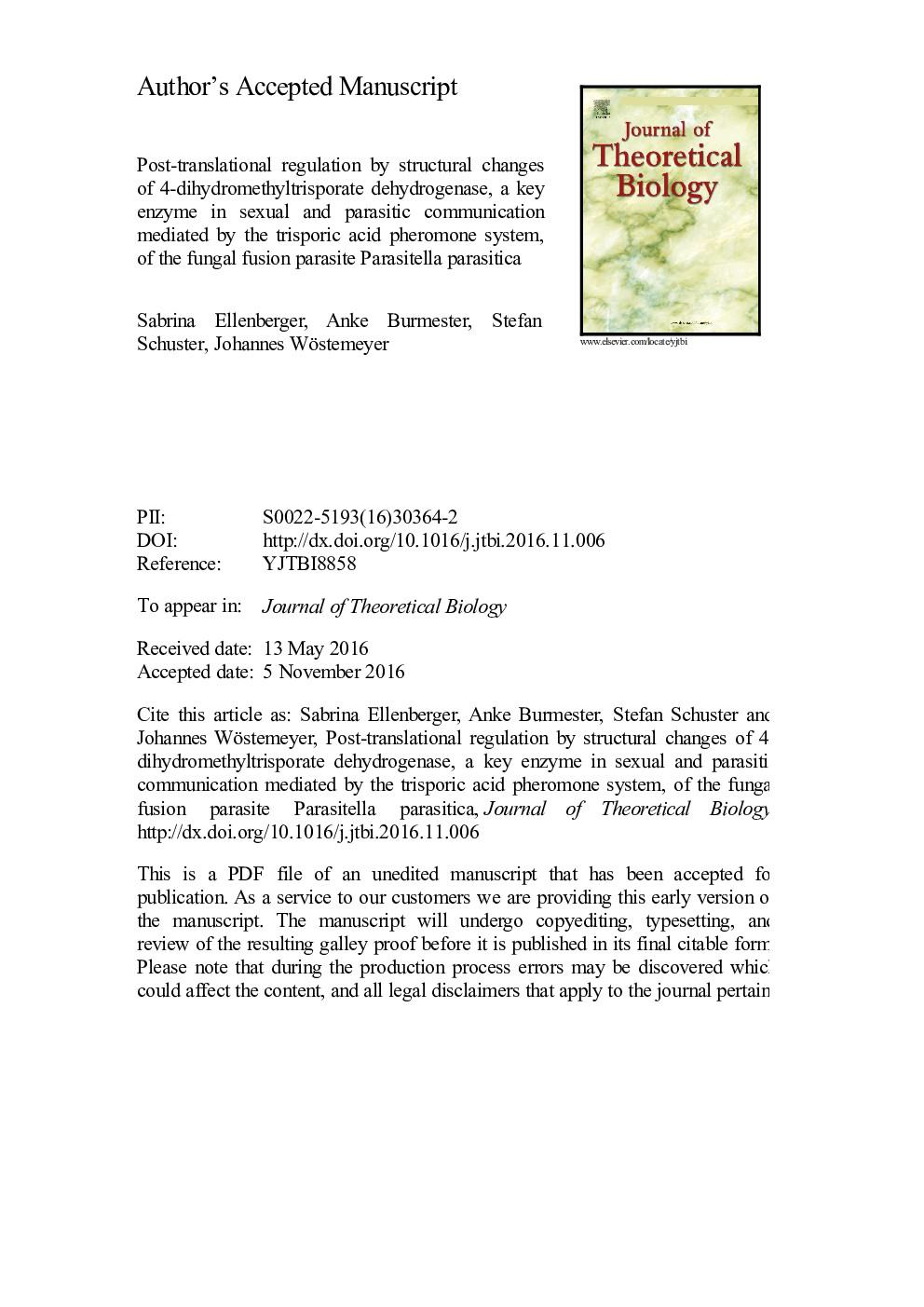| کد مقاله | کد نشریه | سال انتشار | مقاله انگلیسی | نسخه تمام متن |
|---|---|---|---|---|
| 5760200 | 1623797 | 2017 | 23 صفحه PDF | دانلود رایگان |
عنوان انگلیسی مقاله ISI
Post-translational regulation by structural changes of 4-dihydromethyltrisporate dehydrogenase, a key enzyme in sexual and parasitic communication mediated by the trisporic acid pheromone system, of the fungal fusion parasite Parasitella parasitica
دانلود مقاله + سفارش ترجمه
دانلود مقاله ISI انگلیسی
رایگان برای ایرانیان
کلمات کلیدی
موضوعات مرتبط
علوم زیستی و بیوفناوری
علوم کشاورزی و بیولوژیک
علوم کشاورزی و بیولوژیک (عمومی)
پیش نمایش صفحه اول مقاله

چکیده انگلیسی
P. parasitica contains at least six genes coding for TSP1-like proteins. We created models of tertiary structures and performed protein-protein docking with the resulting protein structures to simulate dimerization and to provide support for probable regulatory mechanisms at the protein level. The resulting structure models show differences in putative activity and binding preferences between the different TSP1-like proteins. Two of them seem to be able to form solid binding pockets for substrate and cosubstrate after dimerization. The other four TSP1-like proteins are more likely to represent regulating subunits for the two active isoforms. The ability to form homodimers with enzymatic activity could be the crucial difference between sexual and parasitic communication pathways. TSP1 PARPA_07791 forms enzymatically inactive homodimers. The second TSP1, PARPA_04105, forms active homodimers and could be responsible for the parasitic pathway of communication. Both TSP1 proteins can form more or less active heterodimers with the additional TSP1-like proteins. TSP1 PARPA_07791 mediates the sexual pathway probably as in other zygomycetous fungi like Mucor mucedo. High sequence identities between this TSP1 isomer and TSP1 proteins from other zygomycetes substantiate its function. This bioinformatic study supports previous experimental findings of post-translational regulation of 4-dihydromethyltrisporate dehydrogenases in zygomycetes and, for the first time, provides a substantiated hypothesis of the underlying mechanism.
ناشر
Database: Elsevier - ScienceDirect (ساینس دایرکت)
Journal: Journal of Theoretical Biology - Volume 413, 21 January 2017, Pages 50-57
Journal: Journal of Theoretical Biology - Volume 413, 21 January 2017, Pages 50-57
نویسندگان
Sabrina Ellenberger, Anke Burmester, Stefan Schuster, Johannes Wöstemeyer,